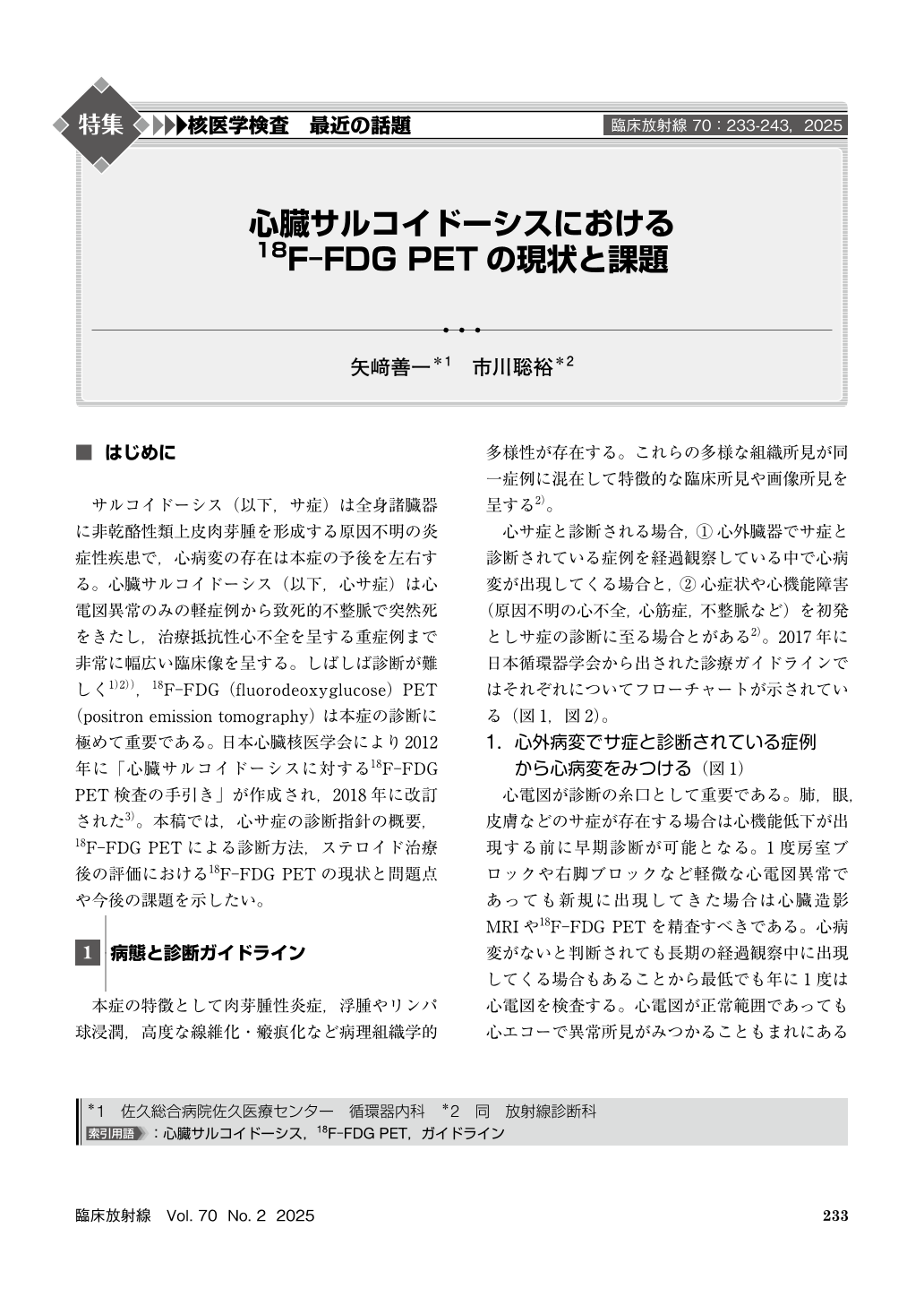Japanese
English
- 有料閲覧
- Abstract 文献概要
- 1ページ目 Look Inside
- 参考文献 Reference
サルコイドーシス(以下,サ症)は全身諸臓器に非乾酪性類上皮肉芽腫を形成する原因不明の炎症性疾患で,心病変の存在は本症の予後を左右する。心臓サルコイドーシス(以下,心サ症)は心電図異常のみの軽症例から致死的不整脈で突然死をきたし,治療抵抗性心不全を呈する重症例まで非常に幅広い臨床像を呈する。しばしば診断が難しく1)2)),18F-FDG(fluorodeoxyglucose)PET(positron emission tomography)は本症の診断に極めて重要である。日本心臓核医学会により2012年に「心臓サルコイドーシスに対する18F-FDG PET検査の手引き」が作成され,2018年に改訂された3)。本稿では,心サ症の診断指針の概要,18F-FDG PETによる診断方法,ステロイド治療後の評価における18F-FDG PETの現状と問題点や今後の課題を示したい。
Myocardial active sarcoid inflammation can be detected by 18F-fluorodeoxyglucose positron emission tomography(18F-FDG PET). Dietary modification of carbohydrate restriction and long fasting time over 18 hours before examination is essential to prevent physiological uptake in the myocardium. Uptake pattern including focal or focal on diffuse and quantitative values such as standard uptake value should be evaluated concomitant with myocardial perfusion images. 18F-FDG PET has the potential to be an important tool for monitoring of immunosuppressive therapy. However, it remains unknown what the most important quantitative index for assessment of treatment response is, what the criteria for deciding responders are, and when it should be evaluated after starting corticosteroids.

Copyright © 2025, KANEHARA SHUPPAN Co.LTD. All rights reserved.


